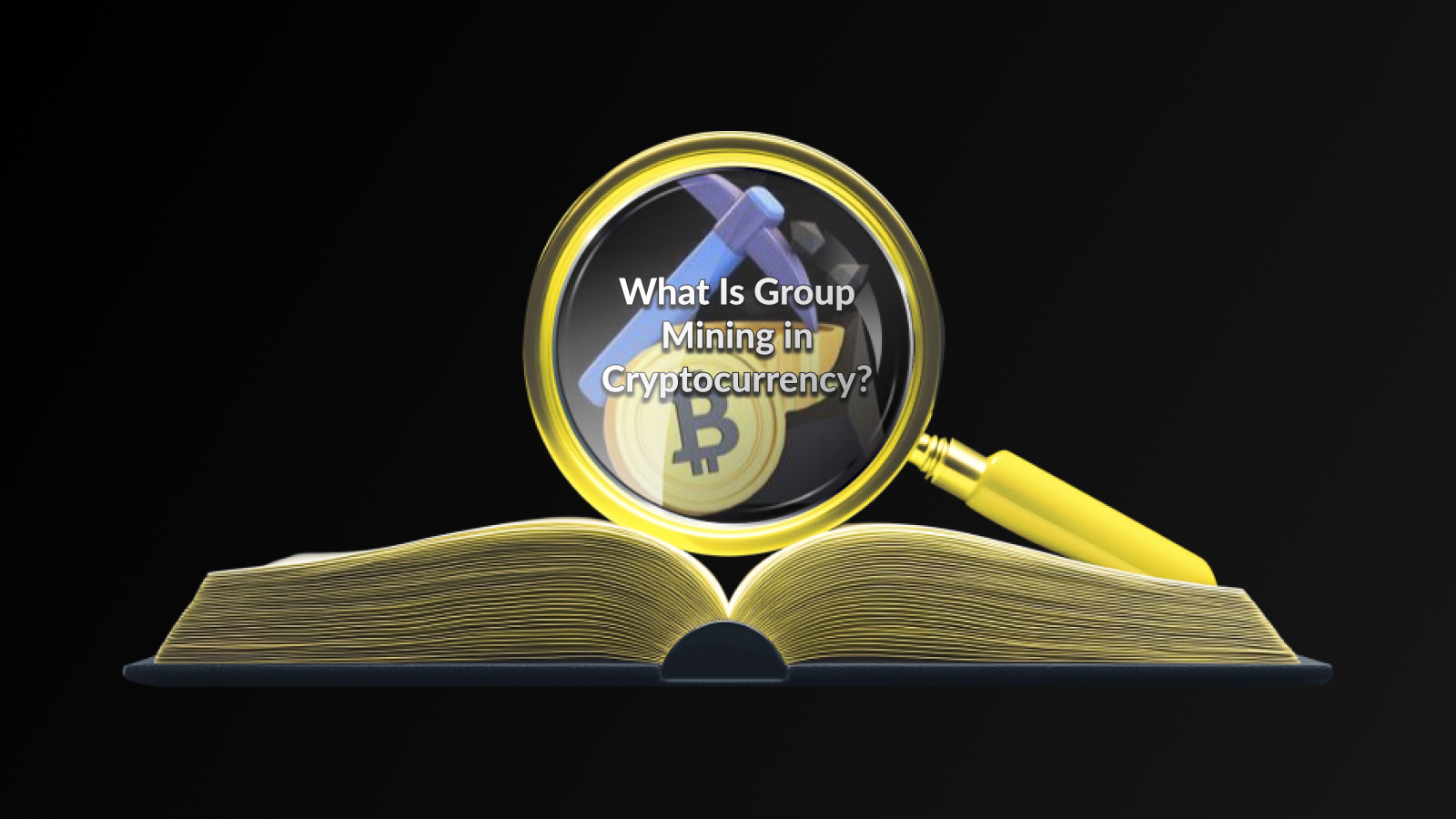Introduction
Group mining, often referred to as mining pools, has become a popular method for cryptocurrency enthusiasts to collaborate and increase their chances of earning Mining Pool Rewards. Rather than individuals mining independently, they combine their computational power, leading to a higher probability of successfully solving complex mathematical problems associated with blockchain transactions. This collective effort helps to maximize the potential return on investment by sharing the rewards among participants.
Key Aspects of Group Mining
- Pooling Resources: Participants contribute their mining hardware and software capabilities to a shared pool.
- Distribution of Rewards: Earnings are distributed based on contributions, allowing for fair compensation among members.
- Increased Probability: Group mining significantly enhances the chances of earning rewards compared to solo mining.
- Fee Structure: Most pools charge a fee, which is a percentage deducted from rewards.
- Community Support: Participants benefit from shared knowledge and troubleshooting within the mining community.
- Transparent Operations: Reputable pools often provide real-time stats and revenue reports to keep all members informed.
In addition to the aforementioned aspects, successful group mining relies heavily on trust and transparency among pool members. It is crucial to choose a reputable mining pool that offers a balanced approach to reward distribution and maintains a secure environment for all participants. Many miners conduct thorough research on potential mining pools, focusing on key metrics such as the pool’s payout scheme, fees, and the technology used to prevent fraud.
Ultimately, group mining can be an effective strategy for individuals looking to enter the cryptocurrency space without the significant upfront investment typically associated with solo mining. By participating in a mining pool, miners can enjoy the benefits of shared resources and increased likelihood of securing Mining Pool Rewards, all while becoming part of a community that shares a common passion for cryptocurrencies.
How Does Group Mining Work?
Group mining is a collaborative solution to the challenges of individual cryptocurrency mining. By pooling resources and sharing computational power, miners can increase their chances of successfully solving complex cryptographic puzzles. This cooperative approach not only boosts efficiency but also minimizes the individual risks associated with mining, such as fluctuations in mining rewards and high operational costs.
In a group mining setup, miners join a mining pool, which is essentially a collections of mining rigs that work together to mine cryptocurrency. Once a pool successfully mines a block, the rewards are distributed among its members based on their contribution to the overall computational power. This process helps to create a steady stream of Mining Pool Rewards for participants, thereby making mining more accessible and profitable for smaller individual miners.
To further understand the dynamics of group mining, it is important to recognize its key components. The grasp of these elements allows miners to make informed decisions about their participation in mining pools and the distribution of mining rewards. Additionally, the choice of mining pool can significantly impact overall profitability, making it crucial to assess factors such as pool fees and reward distribution methods before committing.
Steps in Group Mining Process
- Research and select a reputable mining pool.
- Create an account and configure your mining software.
- Connect your mining hardware to the pool.
- Start mining and monitor your hash rate.
- Receive and track your Mining Pool Rewards regularly.
- Adjust settings as needed based on performance.
- Consider switching pools if profitability decreases.
Understanding the Basics
The fundamental concept behind group mining hinges on the leveraging of collective computational power to solve complex blocks efficiently. Individual miners might struggle due to limited resources; however, group mining enables them to operate more effectively. By working together, members of a mining pool can reduce variance in returns and increase their overall earning potential.
Key Components of Group Mining
In group mining, key components such as pool operators, miners, and reward distribution systems play crucial roles. The structure of a pool can vary, impacting how rewards are allocated and determining the level of transparency within the group. Understanding the relationship between these components is essential for maximizing returns and ensuring that miners feel fairly compensated for their contributions.
Advantages and Disadvantages of Group Mining
Group mining, also known as mining, pools, offers a blend of opportunities and challenges for cryptocurrency enthusiasts. Understanding the advantages and disadvantages of group mining is crucial for anyone considering its adoption. Primarily, these mining pools allow members to combine their compute power, which can lead to better chances of earning Mining Pool Rewards compared to solo mining efforts. However, potential miners need to weigh these rewards against the inherent risks and loss of control involved in participating in such pools.
One significant advantage of group mining is the ability to achieve a consistent payout structure. Because multiple participants are working together, the mining pool can solve blocks more frequently, thus distributing rewards among members in a predictable manner. This system helps smaller miners who might lack the resources to mine effectively on their own. Yet, a notable downside remains: the requirement to share the rewards diminishes the potential earnings for individual miners, which can be a point of contention.
| Aspect | Advantages | Disadvantages |
|---|---|---|
| Reward Sharing | Consistent income from pooled rewards | Lower earnings due to sharing |
| Resource Requirement | Access to collective resources | Dependence on group performance |
| Network Security | Higher security through combined efforts | Risk of centralized attack |
| Technical Expertise | Lower technical skills required | Limited control over mining operations |
Furthermore, one must consider the operational dynamics of mining pools. While group mining can significantly reduce the barrier of entry into cryptocurrency mining, it also imposes certain responsibilities and governance structures that may not align with every miner’s preference. In essence, miners must remain vigilant about the pool’s policies regarding fees, reward distribution, and overall transparency.
Pros and Cons of Group Mining
- Consistent earnings through shared rewards.
- Improved chances of finding block due to collective power.
- Lower barrier to entry for novice miners.
- Increased network security through pooled resources.
- Dependence on mining pool operators for effective management.
- Potential for reduced individual earnings.
- Limited control and flexibility in decision-making.
In-depth Analysis of Group Mining
Analysing the intricacies of group mining reveals vital patterns that can influence individual miners’ decisions. Miners must be actively informed about their pool’s performance metrics and management practices. Going beyond just earning Mining Pool Rewards, it is essential to evaluate the mining pool’s fee structure, payout frequency, and the overall reputation within the community. This detailed analysis will ensure that individuals are making informed choices that align with their financial goals and risk tolerance.
How to Choose the Right Mining Pool
Choosing the right mining pool is a critical step for anyone looking to maximize their profits through group mining. A mining pool enables multiple miners to combine their computational power, thus increasing the chances of earning mining pool rewards. This collective effort can significantly enhance efficiency and ensure a more consistent income compared to solo mining, making the right choice even more pertinent when entering the cryptocurrency space.
Steps to Select a Mining Pool
- Research the Pool’s Reputation: Look for reviews and feedback from current and former members.
- Evaluate the Fee Structure: Compare the fees charged by different pools, as they can impact your overall earnings.
- Assess the Pool Size: Larger pools generally find blocks more frequently but might also share the rewards among more users.
- Check Payment Methods: Ensure the pool offers payment methods that suit your needs, such as proportional or pay-per-share models.
- Consider Minimum Payouts: Review the threshold for payouts to ensure it aligns with your earning expectations.
- Analyse the Pool’s Stability: Verify the pool’s operational history and any reported downtime to gauge reliability.
- Look for Support and Community: A responsive support team and an engaged community can be invaluable resources for troubleshooting and advice.
When selecting a mining pool, it’s also essential to consider the type of cryptocurrency you wish to mine. Some pools specialize in certain coins, potentially offering better mining pool rewards depending on market conditions and network difficulty. Additionally, understanding the payout structure and how rewards are calculated will help you make an informed decision regarding profitability in group mining.
Ultimately, the right mining pool can significantly impact your cryptocurrency mining experience. By following the outlined steps, you can confidently choose a pool that aligns with your goals and provides maximum returns. Remember to always stay updated with market trends and adjust your strategy based on performance and changes in the mining environment.
Disclaimer
This article is for informational purposes only and does not constitute financial or investment advice. Cryptocurrency mining involves risks, including fluctuating profits, high operational costs, and potential regulatory concerns. Always conduct thorough research and consult a professional before making mining-related decisions.
Click for more Darkex education articles.





